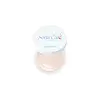What's inside
What's inside
 Key Ingredients
Key Ingredients

 Benefits
Benefits

 Concerns
Concerns

 Ingredients Side-by-side
Ingredients Side-by-side

Synthetic Fluorphlogopite
Titanium Dioxide
Cosmetic ColorantMica
Cosmetic ColorantDimethicone
EmollientBoron Nitride
AbsorbentPolymethylsilsesquioxane
Squalane
EmollientDiisostearyl Malate
EmollientIsostearyl Isostearate
EmollientDimer Dilinoleyl Dimer Dilinoleate
EmollientSilica
AbrasiveCI 77492
Cosmetic ColorantSodium Dehydroacetate
PreservativeAluminum Hydroxide
EmollientTocopherol
AntioxidantCI 77491
Cosmetic ColorantCI 77499
Cosmetic ColorantCucumis Sativus Fruit Extract
EmollientSynthetic Fluorphlogopite, Titanium Dioxide, Mica, Dimethicone, Boron Nitride, Polymethylsilsesquioxane, Squalane, Diisostearyl Malate, Isostearyl Isostearate, Dimer Dilinoleyl Dimer Dilinoleate, Silica, CI 77492, Sodium Dehydroacetate, Aluminum Hydroxide, Tocopherol, CI 77491, CI 77499, Cucumis Sativus Fruit Extract
Ingredients Explained
These ingredients are found in both products.
Ingredients higher up in an ingredient list are typically present in a larger amount.
Mica is a naturally occurring mineral used to add shimmer and color in cosmetics. It can also help improve the texture of a product or give it an opaque, white/silver color.
Serecite is the name for very fine but ragged grains of mica.
This ingredient is often coated with metal oxides like titanium dioxide. Trace amounts of heavy metals may be found in mica, but these metals are not harmful in our personal products.
Mica has been used since prehistoric times throughout the world. Ancient Egyptian, Indian, Greek, Roman, Aztec, and Chinese civilizations have used mica.
Learn more about MicaSilica, also known as silicon dioxide, is a naturally occurring mineral. It is used as a fine, spherical, and porous powder in cosmetics.
Though it has exfoliant properties, the function of silica varies depending on the product.
The unique structure of silica enhances the spreadability and adds smoothness, making it a great texture enhancer.
It is also used as an active carrier, emulsifier, and mattifier due to its ability to absorb excess oil.
In some products, tiny microneedles called spicules are made from silica or hydrolyzed sponge. When you rub them in, they lightly polish away dead skin layers and enhance the penetration of active ingredients.
Learn more about Silica